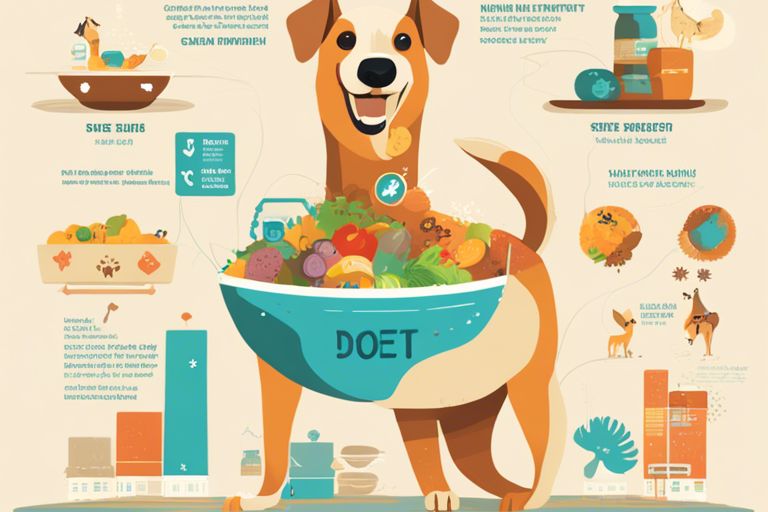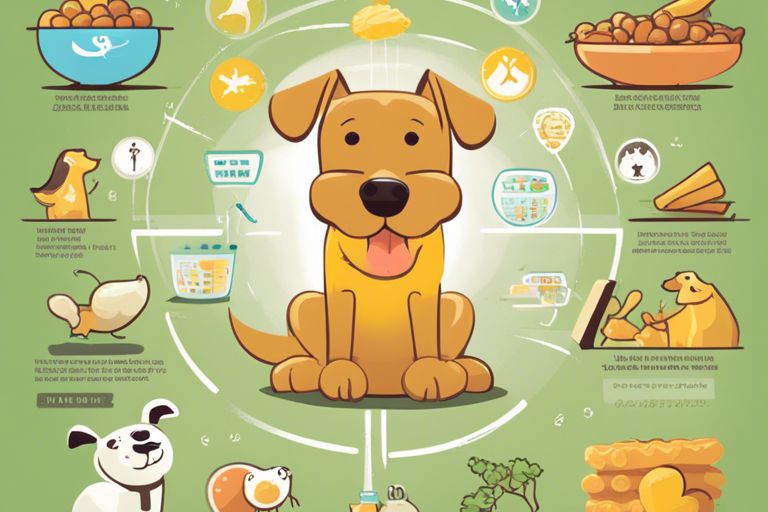Ensuring that your furry companion is in optimal health is crucial for their overall well-being. As a responsible pet owner, it is essential for you to be able to recognize the signs of a healthy dog. Knowing what to look out for can help you catch any potential issues early on and provide the best care for your beloved pet. Some key indicators of a healthy dog include a shiny coat, bright eyes, good appetite, and plenty of energy. However, it is equally important to be aware of any changes in behavior, appetite, or physical appearance that could signal something is amiss. In this blog post, we will discuss the various signs that indicate a healthy dog, as well as some red flags that may warrant a visit to the veterinarian. Stay tuned to learn how to best monitor your dog’s health and provide them with the care they deserve.
Key Takeaways:
- Regular and consistent bowel movements: A healthy dog should have regular and firm bowel movements. Any signs of diarrhea or constipation may indicate an underlying health issue.
- Good appetite and energy levels: A healthy dog should have a healthy appetite and be energetic and playful. Sudden changes in appetite or lethargy may indicate a problem.
- Shiny coat and clear eyes: A healthy dog will have a shiny, smooth coat and bright, clear eyes. Dull, dry, or flaky skin and discharge from the eyes may be signs of health issues.
Physical Health Signs
The physical health of your dog is crucial to their overall well-being and longevity. Monitoring their physical condition can help you catch any potential health issues early on and ensure they live a long, healthy life.
Healthy Weight and Body Condition
Maintaining a healthy weight and body condition is essential for your dog’s overall health. A healthy dog should have a defined waist when viewed from above and you should be able to feel their ribs without excess fat covering them. An ideal weight and body condition will contribute to your dog’s overall mobility and reduce the risk of obesity-related health issues.
Coat Quality and Skin Health
The condition of your dog’s coat and skin is a good indicator of their overall health. A healthy coat should be shiny, lustrous, and free from excessive shedding, dryness, or flakiness. Additionally, their skin should be free from any redness, irritation, or abnormal lumps or bumps. Any changes in their coat or skin can be a sign of an underlying health issue and should be addressed by your veterinarian.
Clear Eyes, Ears, and Nose
Clear and bright eyes, clean ears, and a moist nose are all signs of a healthy dog. Cloudy or red eyes, discharge or foul odor from the ears, and a dry or crusty nose could indicate an underlying health issue such as an infection or allergies. Keeping a close eye on these areas and addressing any abnormalities promptly can help maintain your dog’s overall health.
Maintaining a close eye on these physical health signs can help you detect any potential issues early and ensure your dog stays healthy and happy for years to come. Regular check-ups with your veterinarian can provide additional insight and guidance on maintaining your dog’s physical health.
Behavioral Indicators
Now, let’s talk about the behavioral indicators of a healthy dog. Monitoring your dog’s behavior is crucial in assessing their overall well-being. Paying attention to their energy levels, playfulness, appetite, and digestive health can give you valuable insights into your dog’s health.
Energy Levels and Playfulness
One of the most obvious signs of a healthy dog is their energy level and playfulness. A healthy dog is usually full of energy, eager to play and engage in activities. They may exhibit bursts of high energy and then settle down for periods of rest. Pay attention to any drastic changes in their energy levels and determine if there are any underlying issues causing these changes. Playfulness is also a good indicator of a healthy dog. They should be interested in playing, both with you and with their toys, showing enthusiasm and excitement.
Appetite and Digestive Health
Another important behavioral indicator of a healthy dog is their appetite and digestive health. A healthy dog will have a good appetite, eagerly eating their meals without any hesitation. They should also maintain a healthy weight and body condition. You should also observe their digestive health, which includes regular bowel movements without any signs of diarrhea, constipation, or vomiting. Any changes in appetite or digestive health can be an indication of an underlying health issue that needs to be addressed promptly.
Regular Health Maintenance
After bringing your new furry friend home, it’s important to stay on top of your dog’s regular health maintenance to ensure they stay happy and healthy. This includes a combination of veterinary check-ups, vaccinations, parasite control, and proper nutrition. Here’s what you need to know about each aspect of regular health maintenance for your dog.
Importance of Veterinary Check-ups
Regular veterinary check-ups are crucial for maintaining your dog’s overall health. During these appointments, your vet will conduct a physical examination, check for any underlying health issues, and provide necessary vaccinations. Early detection of any health concerns can lead to more effective treatment and a higher chance of successful recovery. Your vet can also provide valuable advice on nutrition, exercise, and preventive care options tailored to your dog’s specific needs.
Vaccination and Parasite Control
Vaccinations are essential for protecting your dog from serious and potentially life-threatening diseases such as rabies, distemper, parvovirus, and more. Your vet can recommend a vaccination schedule to ensure your dog receives the necessary shots at the appropriate times. Additionally, regular parasite control, including flea and tick prevention as well as deworming, is crucial for your dog’s well-being. Parasites can cause a range of health issues, including skin irritation, anemia, and even life-threatening infections. It’s important to stay consistent with your dog’s vaccination and parasite control to protect them from harmful diseases and parasites.
Emotional Well-being
Not only is your dog’s physical health important, but so is their emotional well-being. Your dog’s emotional health is just as crucial as their physical health, and it’s important to be able to recognize the signs of a healthy emotional state in your beloved pet.
Social Interaction and Behavior
When it comes to your dog’s emotional well-being, their social interaction and behavior play a crucial role. A healthy dog will exhibit friendly and playful behavior towards both humans and other animals. They should be comfortable in social situations and should not display any signs of fear or aggression. Additionally, your dog should be able to adapt to new environments and situations without excessive stress or anxiety, which can be an indication of good emotional well-being.
Signs of Contentment and Stress Management
Signs of contentment in your dog include a relaxed body posture, wagging tail, and a general sense of ease in their demeanor. On the other hand, signs of stress can include excessive panting, trembling, hiding, excessive barking or whining, and destructive behavior. It’s important to address any signs of stress promptly, as prolonged stress can lead to a range of health issues in dogs. Strong positive signs of contentment and stress management should be celebrated as they indicate a healthy emotional state in your dog.
By paying attention to your dog’s social interaction and behavior, as well as their signs of contentment and stress management, you can ensure that they are emotionally healthy and happy. Always remember, a healthy emotional well-being is just as important as physical health for your furry friend.

Conclusion
So, now you know the signs of a healthy dog. It is important to keep an eye on your pet’s physical and behavioral cues to ensure they are in good health. From a shiny coat and bright eyes to regular eating, drinking, and bathroom habits, these are all indicators of your dog’s wellbeing. If you notice any changes in these signs, it’s best to bring your furry friend to the vet for a check-up. Ultimately, understanding these signs will allow you to proactively care for your dog and ensure they lead a happy and healthy life.














